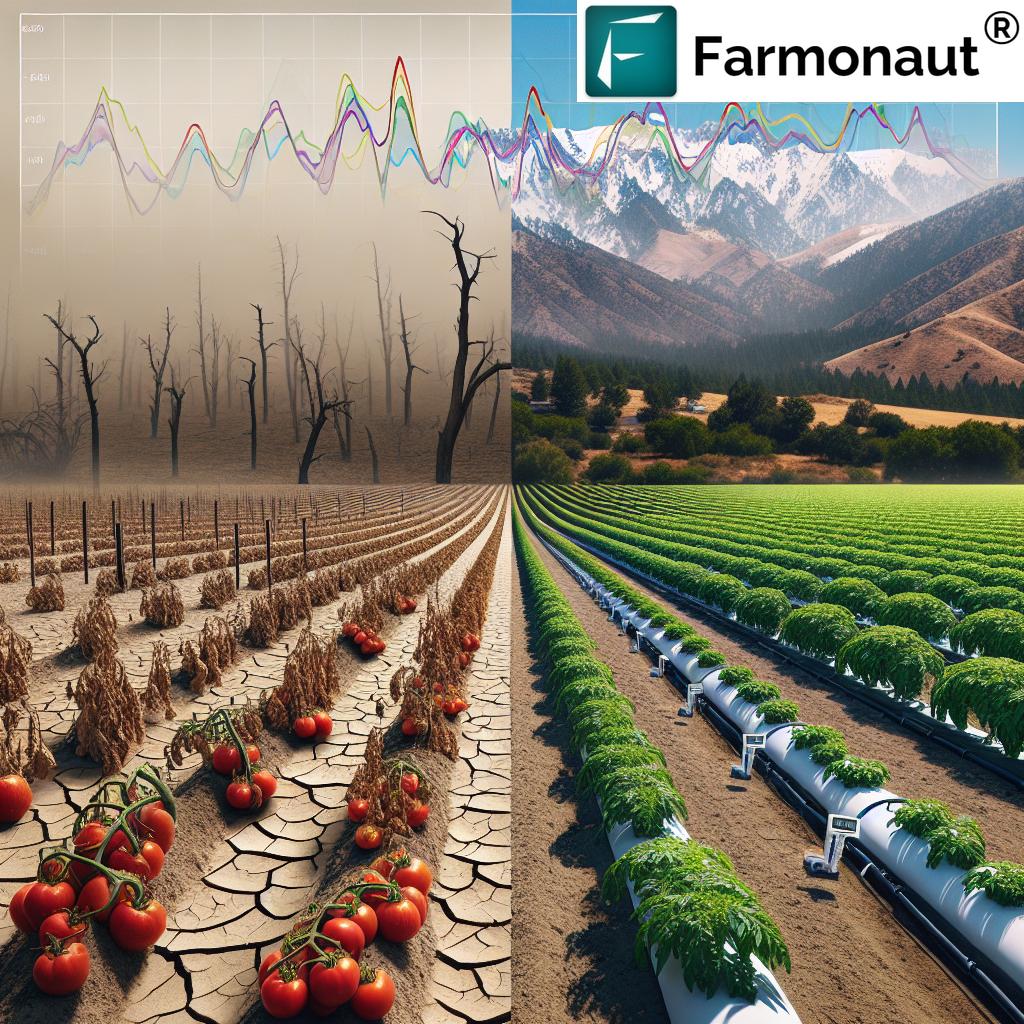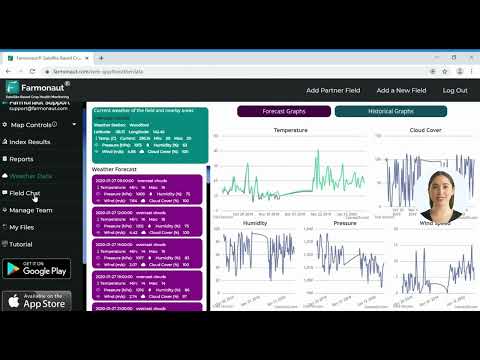California’s Water Dilemma: Sierra Nevada Snowpack Levels and Central Valley Farming Future
“California’s statewide snowpack is at 108% of average, with Northern Sierra boasting 161% while other regions lag behind.”
As we delve into the complex water situation facing California’s agricultural heartland, it’s crucial to understand the intricate relationship between the Sierra Nevada snowpack and the future of Central Valley farming. In this comprehensive analysis, we’ll explore how varying snowpack levels across different regions of the Sierra Nevada are shaping water resource management strategies and impacting agricultural operations in the Central Valley.
The Current State of Sierra Nevada Snowpack
The Sierra Nevada mountain range serves as California’s natural water tower, storing vast amounts of water in the form of snow during winter months. This snowpack gradually melts throughout the spring and summer, providing a critical water supply for agriculture, urban use, and ecosystem maintenance. However, recent surveys have revealed a complex picture of snowpack distribution across the range.
- Statewide average: 108% of historical average
- Northern Sierra: 161% of average
- Central Sierra: 94% of average
- Southern Sierra: 75% of average
These figures, provided by the Department of Water Resources, highlight the significant regional disparities in snowpack levels. While the Northern Sierra has benefited from a series of atmospheric rivers, the central and southern regions are lagging behind, raising concerns for water availability in the coming months.

Impact on Central Valley Farming Operations
The Central Valley, often referred to as the breadbasket of America, relies heavily on water from the Sierra Nevada snowpack for its agricultural production. The variability in snowpack levels across different regions of the Sierra Nevada has significant implications for farming operations in this vital agricultural area.
Joe Del Bosque, CEO of Del Bosque Farms in Fresno County, highlights the challenges faced by farmers in the region. His 2,000-acre farm, which primarily grows melons along with almonds, cherries, and processing tomatoes, depends on water supplied from Northern California, specifically the Shasta Reservoir on the Sacramento River.
“We’re cautiously optimistic about the water situation this year,” Del Bosque notes. “The high snowpack in the Northern Sierra is encouraging, but we’re concerned about the lower levels in the central and southern regions, which could affect our overall water allocations.”
Water Resource Management Strategies
Given the variability in snowpack levels and the looming dry forecast for Central California, water resource managers and farmers are implementing various strategies to optimize water usage and ensure sustainable agricultural production.
- Precision irrigation techniques: Farmers are increasingly adopting precision irrigation systems that deliver water directly to plant roots, minimizing evaporation and runoff.
- Crop diversification: Some farmers are shifting to crops that require less water or have shorter growing seasons to adapt to potential water shortages.
- Water banking: Storing excess water in underground aquifers during wet years for use during dry periods.
- Improved forecasting: Utilizing advanced weather and climate models to make more informed decisions about planting and irrigation schedules.
“The Department of Water Resources conducts regular snow surveys to assess water availability for California’s $50 billion agricultural industry.”
These strategies are crucial for maintaining agricultural productivity in the face of water scarcity challenges. However, the implementation of these techniques requires accurate and timely data on crop health, soil moisture, and weather patterns.
The Role of Technology in Water Conservation
In this context, advanced agricultural technology solutions play a vital role in helping farmers optimize their water usage and improve overall productivity. Farmonaut, a leading agritech company, offers innovative tools that support sustainable farming practices in water-stressed regions like California’s Central Valley.
Through its satellite-based crop health monitoring system, Farmonaut provides farmers with real-time insights into vegetation health (NDVI), soil moisture levels, and other critical metrics. This data enables farmers to make informed decisions about irrigation, fertilizer usage, and pest management, ultimately optimizing crop yields while conserving water resources.
The Jeevn AI Advisory System, another innovative feature offered by Farmonaut, delivers personalized farm advisory services based on satellite data analysis and expert crop management strategies. This AI-driven tool helps farmers adapt to changing water conditions and maintain their vital role in the national food supply chain.
Climate Change and Its Effects on California Agriculture
The variability in snowpack levels and the increasing frequency of extreme weather events in California are closely linked to climate change. As we navigate these challenges, it’s crucial to understand how climate change is affecting the state’s agricultural sector and water resources.
- Shifting precipitation patterns: More rain instead of snow, affecting the natural water storage system of the Sierra Nevada
- Earlier snowmelt: Reducing water availability during crucial summer months
- Increased evaporation: Higher temperatures lead to greater water loss from reservoirs and soil
- More frequent and intense droughts: Putting additional stress on water resources and agricultural production
These climate-related changes underscore the need for adaptive strategies in California’s agricultural sector. Farmers are increasingly turning to technology-driven solutions to mitigate the impacts of climate change and ensure sustainable production.
Snowpack Surveys and Water Allocation Decisions
The Department of Water Resources conducts regular snow surveys throughout the winter months, with the next survey scheduled for February. These surveys are crucial for understanding water availability and potential allocations for the upcoming growing season.
David Rizzardo, a supervising engineer with the Department of Water Resources, explains the significance of these surveys: “The data we collect helps inform water management decisions across the state. It’s particularly important for agricultural areas like the Central Valley, where water allocations can make or break a farming season.”
| Region | Current Snowpack (%) | Historical Average (%) | Impact on Central Valley Farming |
|---|---|---|---|
| Northern Sierra | 161% | 100% | Positive outlook for water supply, potentially higher allocations |
| Central Sierra | 94% | 100% | Near-average conditions, moderate impact on water availability |
| Southern Sierra | 75% | 100% | Concerns for reduced water allocations, potential crop adjustments needed |
The outcomes of these surveys will be essential in determining whether there will be a late-season water allocation or an early shutoff if conditions worsen. For farmers in the Central Valley, these decisions can significantly impact their planting and irrigation strategies for the upcoming growing season.
Adapting to Uncertainty: Crop Yield Forecasting and Risk Management
Given the uncertainties surrounding water availability, crop yield forecasting has become an essential tool for farmers in the Central Valley. Accurate forecasts help farmers make informed decisions about crop selection, planting schedules, and resource allocation.
Farmonaut’s advanced remote sensing technology plays a crucial role in this aspect of farm management. By providing detailed, real-time data on crop health and growth patterns, Farmonaut enables farmers to:
- Predict potential yields with greater accuracy
- Identify areas of stress or underperformance in their fields
- Adjust irrigation and fertilization strategies to optimize crop growth
- Make informed decisions about harvest timing and marketing strategies
Explore Farmonaut’s API for advanced agricultural data
This data-driven approach to farming not only helps manage the risks associated with water scarcity but also contributes to overall farm productivity and sustainability.
The Broader Impact on California’s Economy and Food Security
The water challenges facing Central Valley farmers have implications that extend far beyond the agricultural sector. California’s $50 billion agricultural industry plays a crucial role in the state’s economy and contributes significantly to the national food supply.
Key considerations include:
- Economic impact: Reduced agricultural output can affect employment and economic activity in rural communities
- Food prices: Water scarcity and reduced yields can lead to higher food prices for consumers nationwide
- Crop diversity: Water allocation decisions may influence the types of crops grown, potentially affecting food variety and availability
- Rural community sustainability: Prolonged water challenges can impact the long-term viability of farming communities in the Central Valley
As we navigate these complex issues, it’s clear that sustainable water management and innovative farming practices are not just agricultural concerns but are vital for maintaining food security and economic stability on a broader scale.
Looking Ahead: Sustainable Solutions for California’s Water Future
As California faces ongoing water challenges, it’s crucial to develop and implement long-term, sustainable solutions that balance the needs of agriculture, urban areas, and ecosystems. Some potential strategies include:
- Infrastructure improvements: Upgrading water storage and conveyance systems to reduce losses and improve efficiency
- Water recycling and reuse: Expanding the use of treated wastewater for irrigation and other non-potable uses
- Groundwater recharge: Implementing managed aquifer recharge projects to replenish depleted groundwater resources
- Policy reforms: Developing more flexible and responsive water allocation policies that adapt to changing climate conditions
- Research and innovation: Investing in new technologies and farming practices that improve water use efficiency and crop resilience

In this context, the role of agricultural technology companies like Farmonaut becomes increasingly important. By providing farmers with the tools and data they need to optimize their water usage and improve crop yields, these technologies contribute to the overall sustainability of California’s agricultural sector.
Explore Farmonaut’s API Developer Docs for integration possibilities
The Power of Precision Agriculture in Water Conservation
Precision agriculture techniques, supported by advanced technologies like those offered by Farmonaut, are playing a crucial role in helping California farmers adapt to changing water conditions. These techniques allow for more efficient use of water resources, ultimately contributing to the sustainability of farming operations in the Central Valley.
Key benefits of precision agriculture in water conservation include:
- Targeted irrigation: Applying water only where and when it’s needed, based on real-time soil moisture data
- Early stress detection: Identifying areas of crop stress before visible symptoms appear, allowing for timely interventions
- Improved decision-making: Providing farmers with data-driven insights to optimize irrigation schedules and crop management practices
- Resource optimization: Reducing overall water usage while maintaining or improving crop yields
By leveraging these advanced technologies, California farmers can navigate the challenges posed by variable snowpack levels and uncertain water allocations, ensuring the continued productivity of their operations while contributing to overall water conservation efforts.
Community Engagement and Collaboration
Addressing California’s water challenges requires a collaborative approach involving farmers, water managers, policymakers, and technology providers. Community engagement and knowledge sharing are crucial for developing effective strategies and implementing sustainable practices.
Some key areas for collaboration include:
- Water user associations: Bringing together farmers to collectively manage water resources and share best practices
- Public-private partnerships: Collaborating with technology companies like Farmonaut to develop and implement innovative solutions
- Education and outreach: Providing training and resources to help farmers adopt water-efficient practices and technologies
- Policy dialogue: Engaging farmers and agricultural stakeholders in discussions about water policy and allocation decisions
By fostering a spirit of collaboration and shared responsibility, we can work towards a more sustainable and resilient agricultural future for California’s Central Valley.
Conclusion: Navigating California’s Water Future
As we’ve explored throughout this analysis, the relationship between Sierra Nevada snowpack levels and Central Valley farming operations is complex and multifaceted. While current statewide snowpack levels are above average, regional disparities and the looming threat of a dry forecast present significant challenges for water resource management and agricultural productivity.
The future of farming in California’s Central Valley will depend on our ability to adapt to changing climate conditions, implement sustainable water management practices, and leverage innovative technologies to optimize resource use. Companies like Farmonaut are at the forefront of this agricultural revolution, providing farmers with the tools and insights they need to navigate these challenges successfully.
By embracing precision agriculture techniques, fostering collaboration among stakeholders, and continuing to invest in research and innovation, we can work towards a more resilient and sustainable agricultural sector in California. As we face the uncertainties of future water availability, it’s clear that the path forward will require a combination of technological innovation, policy reform, and community engagement.
The story of California’s water dilemma and its impact on Central Valley farming is still unfolding. As we await the results of future snow surveys and monitor changing climate patterns, one thing remains certain: the ingenuity and resilience of California’s farming community, supported by cutting-edge agricultural technologies, will play a crucial role in shaping the future of agriculture in the Golden State.
FAQ Section
Q: How does the Sierra Nevada snowpack affect Central Valley farming?
A: The Sierra Nevada snowpack serves as a natural water reservoir, gradually releasing water as it melts throughout the spring and summer. This water is crucial for irrigation in the Central Valley, one of the most productive agricultural regions in the United States. Variations in snowpack levels directly impact water availability for farming operations.
Q: What are the current snowpack levels in different regions of the Sierra Nevada?
A: As of the latest surveys, the Northern Sierra is at 161% of average, the Central Sierra is at 94% of average, and the Southern Sierra is at 75% of average. These regional disparities have significant implications for water allocation and management across California.
Q: How are farmers adapting to water scarcity challenges?
A: Farmers are adopting various strategies, including implementing precision irrigation techniques, diversifying crops, utilizing water banking methods, and leveraging advanced technologies like Farmonaut’s satellite-based crop monitoring systems to optimize water usage and improve overall farm productivity.
Q: What role does technology play in addressing California’s water challenges?
A: Technology plays a crucial role in helping farmers manage water resources more efficiently. Advanced tools like Farmonaut’s satellite-based crop health monitoring and AI-driven advisory systems provide real-time insights into crop health, soil moisture levels, and weather patterns, enabling farmers to make data-driven decisions about irrigation and crop management.
Q: How does climate change impact California’s agricultural water supply?
A: Climate change is causing shifts in precipitation patterns, earlier snowmelt, increased evaporation, and more frequent and intense droughts. These factors collectively put additional stress on water resources and agricultural production, necessitating adaptive strategies and innovative farming practices.







